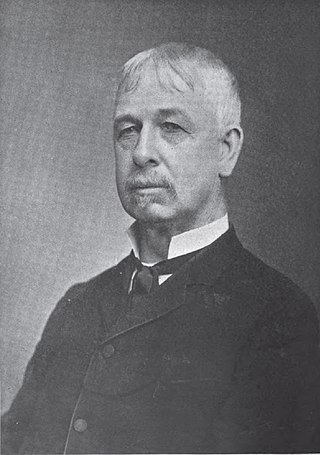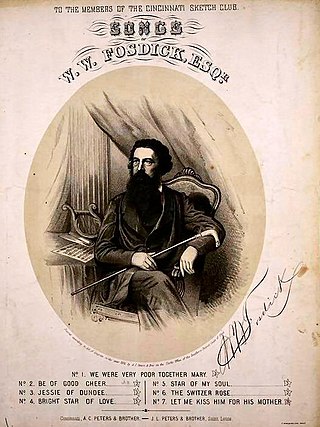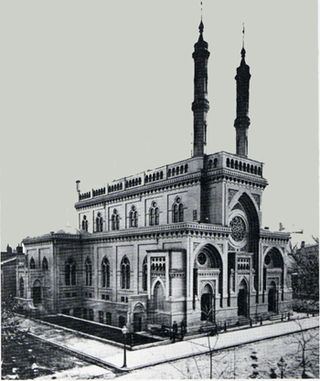
Newport is a home rule-class city at the confluence of the Ohio and Licking rivers in Campbell County, Kentucky. The population was 15,273 at the 2010 census. Historically, it was one of four county seats of Campbell County. Newport is a major urban center of Northern Kentucky and part of the Cincinnati metropolitan area, which includes over two million residents.

Covington is a home rule-class city in Kenton County, Kentucky, United States. Located at the confluence of the Ohio and Licking rivers, it lies south of Cincinnati, Ohio, across the Ohio and west of Newport, Kentucky, across the Licking. It had a population of 40,691 at the 2020 census, making it the largest city in Northern Kentucky and the fifth-most populous city in the state. A part of the Cincinnati metropolitan area, it is one of Kenton County's two seats, along with Independence.

Ludlow is a home rule-class city in Kenton County, Kentucky, United States, along the Ohio River. The population was 4,385 at the 2020 census. It is a suburb of the Cincinnati metropolitan area. It received its greatest period of early growth as a rail station.

William Wright Southgate was a Kentucky State and United States politician. He was the son of Richard Southgate and Ann Winston Hinde. He married Adaliza Keene of Lexington, Kentucky, on November 7, 1823, and they had 13 children.

Linden Grove Cemetery is located along Holman Street, between 13th and 15th streets in Covington, Kentucky, United States. It is the second public cemetery in Covington, the city's first public burial ground being Craig Street Cemetery, which dates to 1815. Craig Street Cemetery closed in 1872. Most of the bodies were moved to Linden Grove.

The Kentucky Governor's Mansion is a historic residence in Frankfort, Kentucky. It is located at the East lawn of the Capitol, at the end of Capital Avenue. On February 1, 1972, it was added to the United States National Register of Historic Places.

The Daniel Carter Beard Boyhood Home is a National Historic Landmark located in the Riverside Drive Historic District of Covington, Kentucky, overlooking the Licking River, across the Ohio River from Cincinnati, Ohio. The two-and-one-half story brick domicile, built in 1821 and one of the two oldest buildings in Kenton County, Kentucky, is the boyhood home of Daniel Carter Beard, a founder of the Boy Scouts of America. He was their National Scout Commissioner from its 1910 founding to his death in 1941.

William Evans Arthur was a U.S. Representative from Kentucky.

The Riverside Drive Historic District is a historic district located at the west bank of the confluence of the Licking River and the Ohio River in Covington, Kentucky, directly across from Cincinnati, Ohio.

Corner in Celebrities Historic District is a neighborhood located in the north section of Frankfort, Kentucky, that is designated an historic district because of the high concentration of structures that previously belonged to notable residents. The area contains the historic homes of George M. Bibb, Benjamin G. Brown, James Brown, John Brown, John J. Crittenden, Thomas Crittenden, James Harlan, John Marshall Harlan, Robert P. Letcher, William Lindsay, Thomas Metcalfe, Charles Slaughter Morehead, William Owsley, Hugh Rodman, Charles S. Todd, Thomas Todd, George G. Vest, John C. Watson, and Simeon Willis. The area was added to the U.S. National Register of Historic Places in 1971.

William Whiteman Fosdick was an American lawyer, poet, writer and song lyricist, primarily remembered today as the writer of original lyrics to the song "Aura Lea" to a melody composed by George R. Poulton.

From July 1824 to September 1825, the French Marquis de Lafayette, the last surviving major general of the American Revolutionary War, made a tour of the 24 states in the United States. He was received by the populace with a hero's welcome at many stops, and many honors and monuments were presented to commemorate and memorialize the visit.

James Keys Wilson was a prominent architect in Cincinnati, Ohio. He studied with Charles A. Mountain in Philadelphia and then Martin E. Thompson and James Renwick in New York, interning at Renwick's firm. Wilson worked with William Walter at the Walter and Wilson firm, before establishing his own practice in Cincinnati. He became the most noted architect in the city. His Old Main Building for Bethany College and Plum Street Temple buildings are National Historic Landmarks. His work includes many Gothic Revival architecture buildings, while the synagogue is considered Moorish Revival and Byzantine Architecture.
The history of Covington, Kentucky began in 1815, with the city's founding.

Phillips' Folly is an historic three-story brick residence in Maysville, Kentucky. The home's Antebellum architecture displays a blend of styles which may be explained, in part, by the home's speculative six-year construction period, which ended with its completion in 1831. The Sutton Street entrances are Federal, windows are typical Greek Revival in their size and character, and the two-tiered portico and the segmental dormers reflect a Georgian influence. The portico and Doric frieze are similar to Drayton Hall (1738–42) near Charleston, South Carolina. The stepped parapets on the end walls are peculiar to the Ohio River Valley and are "associated with the 'Dutch' character of Cincinnati, Ohio and the surrounding area." The home also possesses an artful and unique dry stacked foundation that is set without mortar.
The following is a timeline of the history of Lexington, Kentucky, United States.

The Cincinnati Public Landing is the landing on the banks of the Ohio River in Cincinnati, Ohio, United States.

Elmwood Hall is a historic residence in Ludlow, located in the Kentucky portions of the Cincinnati metropolitan area in the United States. Located atop a prominent Ohio River vantage point, it has been named a historic site.

Louise Southgate was one of the first women physicians in Northern Kentucky where she advocated for girls in the juvenile court system and was an early proponent of birth control. Besides her medical practice and outreach, she led many efforts for the American women's suffrage movement through her local clubs and the Kentucky Equal Rights Association.

















